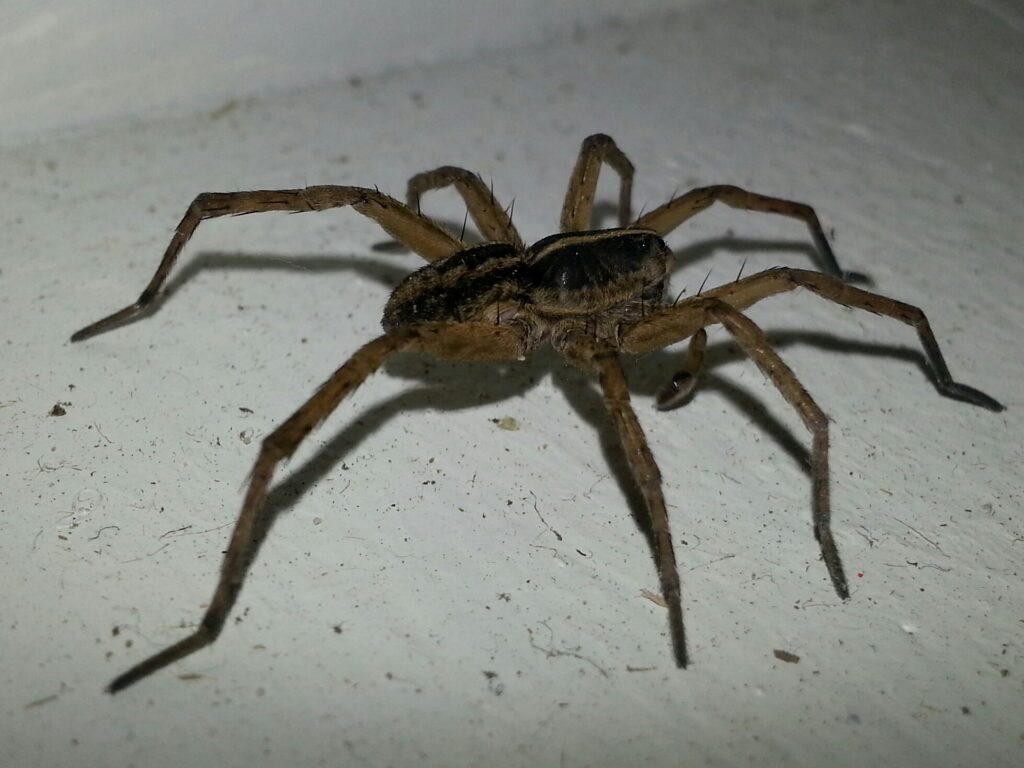 Understanding the life cycle of a mouse is crucial in addressing any infestation effectively. Mice can reproduce quickly, with a single female capable of birthing multiple litters each year. Knowing the average life span of a mouse, which is typically about one year in the wild, helps in understanding how infestations persist and spread if not handled promptly.
Often, homeowners in areas like Niagara seek professional help to curb these issues. Understanding how long it takes to get rid of mice infestations in Niagara depends on various factors, including the severity of the infestation and the methods used to address it. By comprehending the stages of a mouse's life, from birth to adulthood, you can better appreciate the urgency and importance of taking prompt action. This knowledge is not just about eliminating the current infestation but also preventing future ones by disrupting their life cycle.
Understanding the life cycle of a mouse is crucial in addressing any infestation effectively. Mice can reproduce quickly, with a single female capable of birthing multiple litters each year. Knowing the average life span of a mouse, which is typically about one year in the wild, helps in understanding how infestations persist and spread if not handled promptly.
Often, homeowners in areas like Niagara seek professional help to curb these issues. Understanding how long it takes to get rid of mice infestations in Niagara depends on various factors, including the severity of the infestation and the methods used to address it. By comprehending the stages of a mouse's life, from birth to adulthood, you can better appreciate the urgency and importance of taking prompt action. This knowledge is not just about eliminating the current infestation but also preventing future ones by disrupting their life cycle.
The Life Cycle of a Mouse
Understanding the life cycle of a mouse begins with their birth. Newborns are born blind, hairless, and utterly dependent on their mothers. It's astounding how quickly they grow, with their eyes opening around two weeks and weaning by three weeks. By one month, they're nearly independent, ready to fend for themselves and start exploring their surroundings. This rapid growth rate is why infestations can escalate so quickly, as the population increases exponentially with each new litter. The reproductive abilities of these small creatures are nothing short of extraordinary. A single female can birth multiple litters annually, each containing up to twelve offspring. This prolific breeding cycle is the heart of infestation issues. In warmer conditions, such as those found inside our homes, these animals can reproduce year-round, making it challenging to control their numbers once they've established themselves. Recognizing this stage is critical, as it underscores the need for timely intervention to prevent an infestation from spiralling out of control. Once they reach adulthood, typically around six weeks, these creatures enter the most active phase of their lives. They are now fully capable of foraging, nesting, and, importantly, reproducing. Their average life span in the wild is around one year, but in the protected environment of a home, they can live longer. This extended lifespan indoors allows them to continue reproducing, further complicating efforts to manage their population. Understanding the longevity of these animals in a home environment highlights the importance of sustained control measures.How Infestation Begins and Grows
One of the first steps in addressing an infestation is identifying how these animals enter your home. They can squeeze through incredibly small openings, gaps as tiny as a pencil's diameter. Common entry points include cracks in foundations, gaps under doors, and openings around utility lines. By understanding where and how these pests gain access, homeowners can take proactive measures to seal these entry points, reducing the likelihood of an infestation taking hold. The rapid population growth of these creatures can be staggering. Given their short reproductive cycle and high litter sizes, a small initial population can expand into a significant infestation in a matter of months. This exponential growth is why early detection and intervention are crucial. Regular inspections and prompt action at the first signs of activity can prevent a minor issue from becoming a major problem. Recognizing the signs of an infestation early can make a significant difference in managing the problem. Common indicators include droppings, gnaw marks on food packaging or structural materials, and the presence of nests made from shredded paper or fabric. Unusual noises, especially at night, can also be a sign. By being vigilant and aware of these signs, homeowners can take action before the infestation becomes too severe, improving the chances of successful control.The Impact on Home and Health
 These small intruders can cause significant damage to your home. Their constant gnawing can compromise the integrity of various materials, including wood, insulation, and even wiring. This damage can lead to costly repairs and, in severe cases, pose safety hazards. Understanding the potential for structural damage highlights the importance of addressing infestations promptly and thoroughly to protect your home.
Beyond the structural impact, the health risks associated with these pests are a serious concern. They are known carriers of several diseases, which can be transmitted to humans through direct contact or contaminated food and surfaces. Additionally, their droppings and urine can trigger allergies and asthma in sensitive individuals. Recognizing these health risks underscores the need for effective control measures to ensure the safety and well-being of your household.
The presence of these animals in the home can lead to extensive contamination. Their habit of foraging for food means they often come into contact with pantry items, leaving droppings and urine in their wake. This contamination can spoil food and necessitate thorough cleaning to maintain hygiene. Understanding the extent of this contamination helps homeowners appreciate the importance of comprehensive control and prevention strategies.
These small intruders can cause significant damage to your home. Their constant gnawing can compromise the integrity of various materials, including wood, insulation, and even wiring. This damage can lead to costly repairs and, in severe cases, pose safety hazards. Understanding the potential for structural damage highlights the importance of addressing infestations promptly and thoroughly to protect your home.
Beyond the structural impact, the health risks associated with these pests are a serious concern. They are known carriers of several diseases, which can be transmitted to humans through direct contact or contaminated food and surfaces. Additionally, their droppings and urine can trigger allergies and asthma in sensitive individuals. Recognizing these health risks underscores the need for effective control measures to ensure the safety and well-being of your household.
The presence of these animals in the home can lead to extensive contamination. Their habit of foraging for food means they often come into contact with pantry items, leaving droppings and urine in their wake. This contamination can spoil food and necessitate thorough cleaning to maintain hygiene. Understanding the extent of this contamination helps homeowners appreciate the importance of comprehensive control and prevention strategies.
Effective Control Measures
The first step in any effective control strategy is a thorough inspection to identify the extent of the infestation and locate entry points. This process involves examining common hiding spots, such as behind appliances, in attics, and along baseboards. By accurately identifying the problem areas, homeowners can target their efforts more effectively, increasing the chances of successful control. Once entry points have been identified, sealing them is a critical step. This process involves using materials like steel wool, caulk, and metal sheeting to block gaps and cracks. By preventing new animals from entering, homeowners can reduce the influx of new individuals, making it easier to manage the existing population. This proactive approach is a key component of any successful control strategy. Trapping is a common method for removing these pests from the home. Various types of traps are available, including snap traps, live traps, and glue boards. Each type has its advantages and considerations, and the choice of trap will depend on the specific circumstances of the infestation. By understanding the options and using them effectively, homeowners can significantly reduce the population within their homes.Why Truly Nolen is the Best Choice for Pest Control Services
 At Truly Nolen, we bring decades of experience and expertise to the table. Our team is trained to understand the behaviour and biology of various pests, allowing us to develop targeted and effective control strategies. This deep knowledge base ensures that we can address infestations comprehensively, reducing the chances of recurrence.
We offer a range of comprehensive solutions tailored to the specific needs of each homeowner. Our approach includes thorough inspections, sealing entry points, trapping and removal, and ongoing monitoring. This multi-faceted strategy ensures that we address all aspects of the infestation, providing long-lasting results.
We are committed to using safe and environmentally friendly methods in our control efforts. Our team uses products and techniques that minimize risks to humans and pets while effectively managing pest populations. This commitment to safety and sustainability is central to our approach, ensuring peace of mind for our customers.
At Truly Nolen, we bring decades of experience and expertise to the table. Our team is trained to understand the behaviour and biology of various pests, allowing us to develop targeted and effective control strategies. This deep knowledge base ensures that we can address infestations comprehensively, reducing the chances of recurrence.
We offer a range of comprehensive solutions tailored to the specific needs of each homeowner. Our approach includes thorough inspections, sealing entry points, trapping and removal, and ongoing monitoring. This multi-faceted strategy ensures that we address all aspects of the infestation, providing long-lasting results.
We are committed to using safe and environmentally friendly methods in our control efforts. Our team uses products and techniques that minimize risks to humans and pets while effectively managing pest populations. This commitment to safety and sustainability is central to our approach, ensuring peace of mind for our customers.

